Ballet productions are full of artful creativity – choreography, music, costumes. But there is one element of staging classical productions that rarely gets the spotlight – the stage art.
Ruth Gilmore has been the artist behind Olympic Ballet Theatre’s stage art for over a decade. She paints everything that appears on stage – from scrims (the thin, almost transparent piece of fabric hanging in front of the stage) to backdrops for each scene to the hard pieces of the scenery such as Don Quixote’s bookshelf, Lorenzo’s tavern, and, of course, the famous windmill (all built by OBT Master Carpenter Lars Christensen).
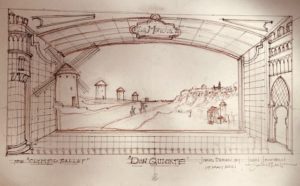
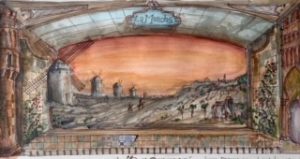
She works closely with the stage designer, John Iacovelli, who creates the sketches and mocks up a miniature stage model showing a backdrop for every scene. Her job is to interpret his vision, turning each sketch into a three-dimensional life-sized town, street, or room. “I am a giant Xerox machine!” – jokes Ruth.
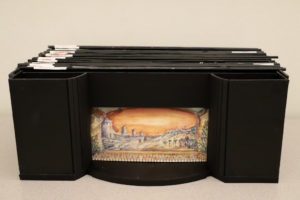
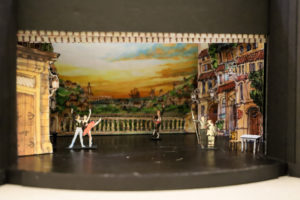
But taking a 2-foot stage model to a 50-foot stage art takes skill and creativity beyond simply rendering an image on a larger scale. When working with art that size, Ruth creates texture and adds interpretive details that don’t even exist in the original drawing. For example, when painting brick on the wall, she adds color gradients and other details to show the illusion of depth.
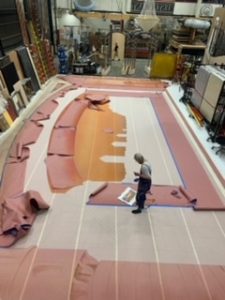
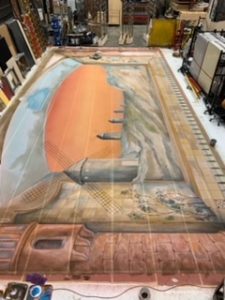
Each backdrop takes several weeks to cut, prime, draw, and paint. A three-act production such as Don Quixote has up to 20 drops. There are scenes in the town square, a nomad camp, Don Quixote’s room, and more!
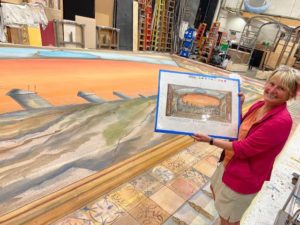
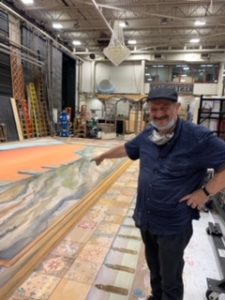
With at least three people working on every drop, the process is long, messy, but rewarding, and Ruth is excited to share her craft with the audience. Don Quixote’s production is one weekend only – join OBT to see these remarkable backdrops on May 14 and 15, 2022, at the Edmonds Center for the Arts.
Pictures: original sketches of Don Quixote stage art by John Iacovelli, stage model, backdrop painting in process, Ruth Gilmore and John Iacovelli
